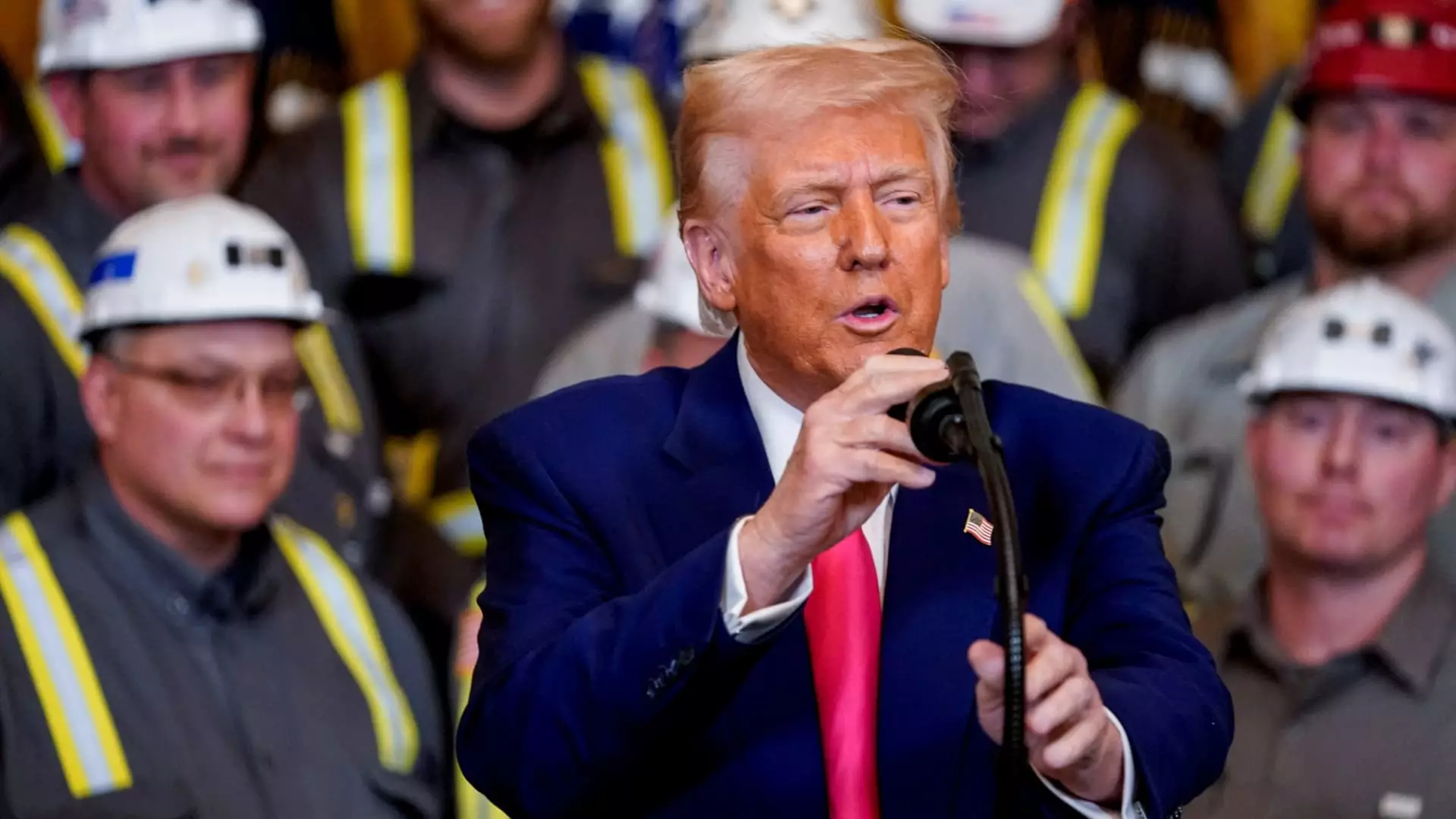In a bold move reminiscent of earlier industrial sentiments, President Donald Trump aims to resuscitate the ailing coal industry in the United States. His recent executive order directs government officials to seek out areas with existing coal-powered infrastructure to support burgeoning data centers vital for artificial intelligence (AI) advancements. On the surface, this initiative appears to fill a clear gap in energy demand from the tech sector, but upon deeper inspection, it reveals a tapestry of contradictions and misguided priorities.
Trump’s insistence on using coal as a power source for data centers in a tech-driven age starkly contrasts with the environmental goals set by leading technology companies. By endorsing “good, clean coal” as a supplement, the intentions behind this revival seem naive, if not detrimental. The reality check lies in the sobering statistics: coal still produces more carbon dioxide emissions per kilowatt-hour than any other energy source, aside from oil. Herein lies the critical question—can our beleaguered coal industry genuinely offer a sustainable solution, or is it merely a conflated mirage fueled by fossilized political ideology?
Coal vs. Renewables: A Delicate Dance
The tech industry’s significant investment in renewable energy and nuclear power juxtaposes sharply with Trump’s rhetoric on coal. Despite the president’s promises, most tech executives recognize that fossil fuel generation—especially coal—cannot meet their ambitious goals for reducing carbon footprints. This revelation presents a paradox where the quest for AI advanced capabilities seems to lend temporary credence to an industry that has been steadily declining for years. Coal, at this juncture, is akin to a last-ditch effort at relevance—a reminder of what once powered an entire nation before the winds of change swept in, heralding cleaner alternatives.
In considering coal’s viability in relation to tech demands, executives from major companies like Amazon and Nvidia demonstrate hesitance. They acknowledge the necessity for some form of thermal energy to temper immediate energy consumption without explicitly endorsing coal. This reflects a broader realization that natural gas—a far more efficient fossil fuel—offers a more pragmatic solution to the impending energy crisis. The notion that coal can make a comeback is as misguided as suggesting that horse-drawn carriages could field the demand for modern transportation.
The Economic Reality of Coal Usage
While Trump’s advocacy for coal may seem buoyant, it disguises a stark economic reality. The coal industry is in a state of existential crisis, with its market share dwindling from over half of U.S. electricity generation in 2001 to a mere fraction today. The CEO of Peabody Energy’s optimism for coal’s potential to meet the demands of modern electricity generation can easily ring hollow as industry data indicates that current capacity utilization is languishing at a mere 42% of maximum output.
Moreover, the discussion around un-retiring dysfunctional coal plants serves more as a populist appeal to a base rather than a strategic energy policy. The fact remains that even if some existing plants are revived, the economics favor natural gas and renewable energies moving forward. With mounting pressure from climate activists and tech companies declaring net-zero goals, the idea of reinvigorating coal plants feels like raising the dead—a futile exercise against the current of progress.
A Tempest in an Energy Teapot
The complexities of energy consumption in relation to AI growth cannot be overstated. There’s an undeniable need for a diversified energy portfolio to address the expected surge in demand—predicted to increase by 40% in the coming years. However, even as Trump’s push for coal seems to advocate for immediate solutions, the long-term implications are grim. The trajectory toward renewable energy and sustainable practices enjoys an irrefutable backing from both market dynamics and public sentiment.
Critics like Nat Sahlstrom pinpoint the glaring dissonance in Trump’s allegiance to coal. He argues that there is no real path forward where new coal plants become a feasible long-term solution, especially within the hyperscale segment that operates on strict sustainability criteria. Essentially, coal is not just fading; it is being outpaced by innovations and investments in cleaner technology. This widening chasm between political rhetoric and technological advancements should raise alarms about the coalition between outdated methods and a future dependent on progressive energy solutions.
As the coal industry struggles for any semblance of revival, it becomes starkly evident that real progress lies in embracing a diversified energy future. The voices in the room supporting coal, while significant, are increasingly drowned out by the realities of climate change and the clear shift toward renewables. At a time when innovation should be at the forefront, falling back on coal appears not just outdated, but dangerously shortsighted.

